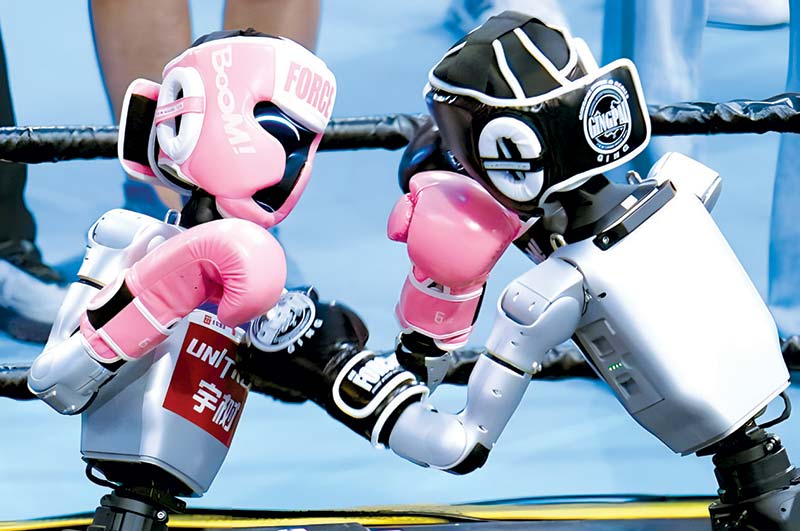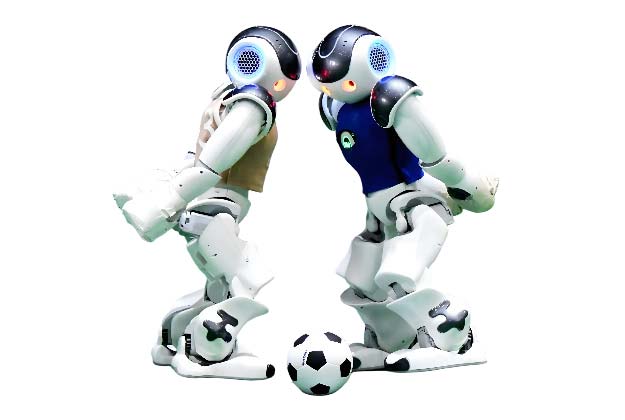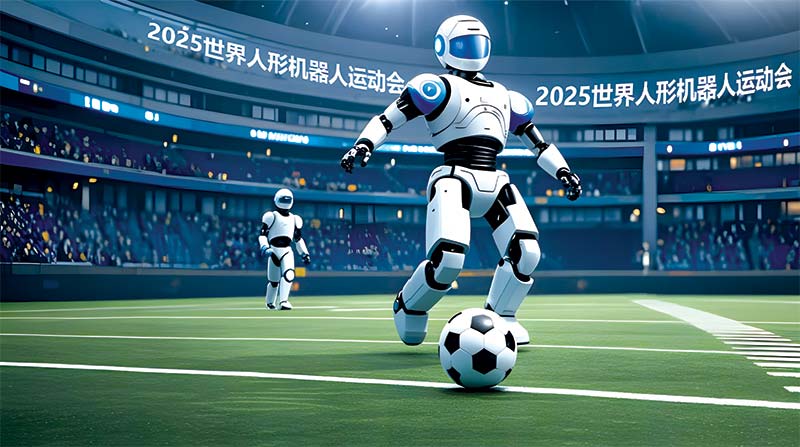Blitz Bureau
NEW DELHI: Three-day World Humanoid Robot Games were held in Beijing, China from August 15 to August 17. Over 500 humanoids or robots participated in the unique games championship which saw China showcasing its advances in artificial intelligence and robotics with 280 teams from 16 countries.
Robots competed in sports such as track and field, and table tennis, as well as tackled robot-specific challenges from sorting medicines and handling materials to cleaning services.
Teams came from countries including the United States, Germany and Brazil, with 192 representing universities and 88 from private enterprises such as China’s Unitree and Fourier Intelligence. Competing teams used robots from Chinese manufacturers such as Booster Robotics.
“We come here to play and to win. But we are also interested in research,” said Max Polter, a member of HTWK Robots football team from Germany, affiliated with Leipzig University of Applied Sciences.
“You can test a lot of interesting new and exciting approaches in this contest. If we try something and it doesn’t work, we lose the game. That’s sad but it is better than investing a lot of money into a product which failed.”
At the games in Beijing, which charged 128 to 580 yuan ($17.83-$80.77) for tickets, humanoids crashed into each other and toppled over repeatedly during football matches, while others collapsed mid-sprint during running events.
During one football match, four robots crashed into each other and fell in a tangled heap. In the 1500-metre running event, one robot suddenly collapsed while running at full speed, drawing gasps and cheers from spectators.
Despite frequent tumbles requiring human assistance to help robots stand, many managed to right themselves independently, earning applause from audiences.
Organisers said the games provide valuable data collection opportunities for developing robots for practical applications such as factory work.
Football matches help train robots’ coordination abilities, which could prove useful for assembly line operations requiring collaboration between multiple units, commentators said.
China is investing billions of dollars in humanoids and robotics as the country grapples with an ageing population and growing competition with the US over advanced technologies.
It has staged a series of high-profile robotics events in recent months, including what it called the world’s first humanoid robot marathon in Beijing, a robot conference and the opening of retail stores dedicated to humanoid robots.
Morgan Stanley analysts in a report last week noted a surge in attendance to a recent robot conference from the general public compared to previous years, saying this showed “how China, not just top government officials, has embraced the concept of embodied intelligence.”

Where they came from…
Of the 192 universities which participated in robot olympics, several were from China. These included:
Tsinghua University: Their team, Tsinghua Hephaestus, was noted as a strong contender in the football competition. They also had a team, THU Robotics, that won a previous robot football tournament in Beijing.
Peking University: This university’s robotics lab developed and entered a culturally-themed robot called DragonBot.
Shanghai Jiao Tong University: The university’s team brought a robot specifically optimised for powerlifting and logistics tasks.
Harbin Institute of Technology: A longtime player in China’s space robotics programme, this university’s team fielded a robot with advanced arm dexterity.
Zhejiang University: This university partnered with a local company, Unitree Robotics, to contribute AI navigation software.
Leipzig University of Applied Sciences (HTWK, Germany): A member of their team, HTWK Robots, was quoted in an article about the games.
International involvement at robots olympics wasn’t limited to universities. Reports mentioned the presence of robots from major international robotics companies for exhibition and competition, including:
Boston Dynamics (USA): Their famous Atlas robot was noted for exhibition matches, performing flips and jumps.
Kawasaki (Japan): The Kaleido robot was seen participating in lifting and strength-based challenges.
PAL Robotics (Spain): Their TALOS robot took part in logistics and industrial tasks.
Collaboration: Some international teams collaborated with local Chinese institutions. For example, Boston Dynamics reportedly partnered with researchers at the Harbin Institute of Technology to test balance recovery, and Japanese labs exchanged actuator design methods with Shanghai Jiao Tong University.

…And what they did
The World Humanoid Olympics in Beijing was more than just a sports competition; it was a showcase of the current state of robotics and a glimpse into the future of human-robot interaction.
A blend of sports and real-world tasks
The “Olympics” featured a mix of traditional sports and practical, real-world challenges. While one heard about sports like football, track and field, and gymnastics, the events also included scenario-based challenges such as:
* Medicine sorting and pharmaceutical handling, which simulate tasks in a hospital or pharmacy.
* Hotel cleaning services, where robots had to navigate a room, open doors, and dispose of items like water bottles and food containers.
* Industrial material handling to test the robots’ dexterity and strength for factory work.
This dual focus highlights that the ultimate goal of humanoid robotics is not just entertainment, but to develop machines that can be useful in everyday life.
“Falls” were part of the show
A recurring theme at the robot olympics was frequent tumbles and mishaps. Robots were seen collapsing mid-sprint, colliding with each other in football matches, and falling flat on their faces during martial arts routines. However, this wasn’t seen as a failure but as a crucial part of the learning process.
The competition served as a high-pressure data collection opportunity. Watching how a robot recovers from a fall or manages to get back up unassisted provided invaluable data for engineers to improve their designs, balance, and recovery algorithms.
Showcasing China’s national strategy
The event was a major public relations effort for China, which has made humanoid robotics a “center of their national strategy.” The government is investing billions in the field with the goal of becoming a world leader in humanoid AI and robotics by 2027. The games served as a platform to demonstrate the country’s technological competence and global competitiveness in a highly visible and entertaining way.
Not just universities and companies
While major universities and companies were the primary participants, a few middle school teams were also among the competitors. This inclusion showed an effort to inspire the next generation of robotics engineers and demonstrates that the field is becoming more accessible.
Exhibition, along with competition
Many of the world’s most famous robots, like Boston Dynamics’ Atlas, were there for exhibition or for specific demonstrations, but not always for head-to-head competition. The games were a formal testbed for many companies and labs, some of which had already shown off their robots in other events, like a humanoid robot half-marathon held in Beijing in April.
A vision for coexistence
The opening ceremony featured a mix of human and robot performers, including a robot band playing alongside live musicians and robots modelling clothing next to human models. The overall message, as stated by the organisers, was to “foster a deep integration of science, technology, sports, and culture” and to “showcase the power of technology” in pursuit of a “dream of coexistence.”



